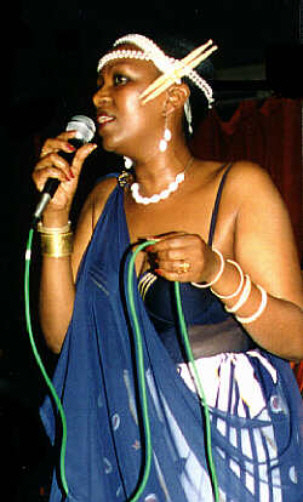Resource 4: Preparing lessons on life stories
![]() Background information / subject knowledge for teacher
Background information / subject knowledge for teacher
Collect the resources that you will need. This may take some time, but the newspapers, magazines and comics that you collect could be used for many different kinds of language lessons in addition to those on reading and writing life stories. Some pupils may be able to bring newspapers and magazines from home, so ask them to ask their families for permission to do so. Ask your colleagues and friends to contribute newspapers and magazines that they have finished with. In some countries, newspaper and magazine publishers may be prepared to donate copies to your school. Some NGOs also have excellent publications. For example, articles about Kagame Paul’s life are available from different Rwandan newspapers.
Before you begin these lessons you must have enough reading material about a range of well-known people for each group of pupils to work with.
Copy on to large sheets of paper or cardboard or on to your chalkboard the life story of Cecile Kayirebwa (biography below) OR another life story of your choice that is written in fairly simple language.
Make a list of common features of life stories to discuss with your pupils. These include:
- usually telling the story in a time sequence from early years to later years in the person’s life;
- highlighting the special achievements of the person’s life;
- details of something particularly interesting or amusing about the person’s life.
Now you are ready to begin the lesson!
Guiding pupils while they write life stories
While pupils are working in their groups, move round the room to check that they understand the task and are able to find articles to use. You could write a ‘checklist’ on the chalkboard to guide pupils in their writing.
For example:
- name(s) of the person;
- place of birth;
- family details;
- ‘history’ – school days, first achievements, later achievements;
- interesting/sad/amusing things that have happened in the person’s life.
Encourage pupils to think about the order in which to write the information about the person and to use some of their own words. They should not just copy from the articles.
Cecile Kayirebwa’s life story (biography)

Renowned Rwandan vocalist Cécile was born in Kigali in 1946 and had a peaceful childhood growing up in the country known as the 'land of a thousand hills'. At school in the 1950s she was part of a singing group called Circle of Rwandan Song and Dance – their work was broadcast on Radio Rwanda. Cécile had a profound interest in the origins of Rwandan music and she pursued that during her employment as a social worker after leaving school. She was determined that Rwandan music should be preserved and shared worldwide. She began to compose songs, including a praise song for Rwandan Queen Rosali Gicanda.
War broke out in Rwanda in 1973 and Cécile and her husband fled to safety in Belgium where she has been based since then. From 1975, Cécile was part of a musical group called Iyange for five years. Then she studied Rwandan heritage at the Royal Museum of Central Africa. In 1984, she joined another group, Bula Sangoma, who she toured Europe and America and recorded an album with. Cécile followed that in 1987 with a concert tour of Rwanda and Uganda with the Ingeli orchestra.
Hearing that her mother was ill, Cécile travelled to Rwanda in 1988. However, the process of getting there took so long that she could not arrive before her mother died.
Cécile's songs transcend the various people in her home country and are accompanied by traditional instruments such as the ‘umuduri’ and ‘ikembe’. Cécile contributed to a short film Umulisa (1986). She has recorded several albums. The fourth and most acclaimed, Ubumanzi, was released in 1990.
On her album Rwanda (1994), the lyrics cover such topics as family situations, the beauty of Rwanda and lullabies.
Cécile found time during her tours to work on an album entitled Amahoro, meaning Peace, which she released in 2002. Her CD released in 2005, Ibihozo, consists of lullabies, love songs and nostalgic songs about separation.
When Cécile tours, she spreads awareness of Rwandan culture. She participated in important festivals such as the first Pan African Festival of Dance held in Kigali, Rwanda, in 1998; the 'Robben Island Event' held in Cape Town, South Africa, a year later, and at WOMAD in 2001. Cécile also performed for awareness events such as the 2001 'Holocaust Memorial Event' held in London, UK, and 'Action Against AIDS' organised by the African First Ladies in Kigali, Rwanda. Fittingly, Cécile's evocative vocals contributed to the soundtrack of the 2006 film Shooting Dogs, with music composed by Dario Marianelli.
Taken from: www.africanmusiciansprofiles.com
Resource 3: Praise poems and stories



